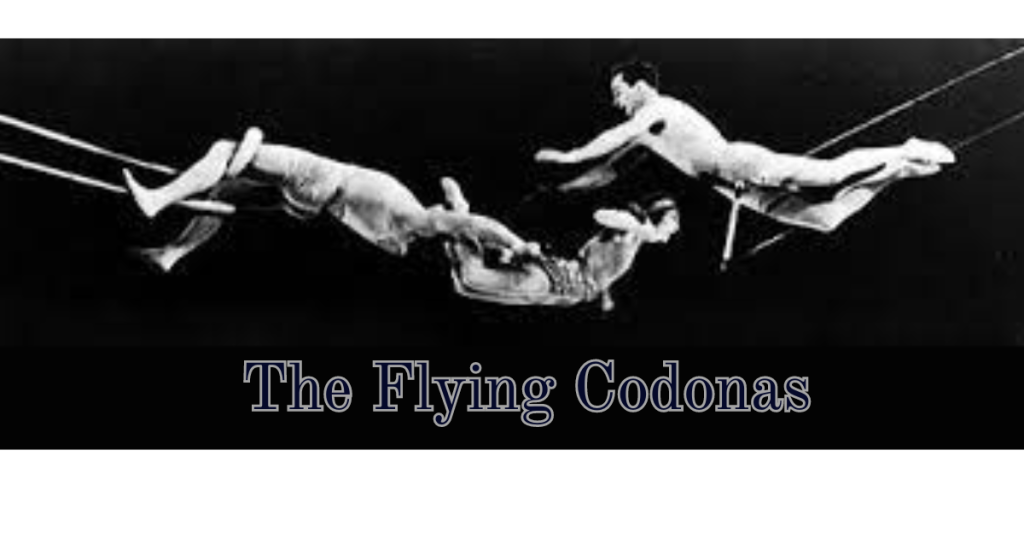Welcome to the captivating world of trapeze acrobatics, where artistry and athleticism blend seamlessly in a display of awe-inspiring skill. This article aims to provide a brief but comprehensive overview of the origins, evolution, and significance of trapeze acrobatics. Delve into the rich history of this art form, explore the contributions of legendary performers, and discover the enduring impact trapeze acrobatics has had on circus culture. Join us on this journey as we unveil the contemporary importance and global recognition of this extraordinary discipline.
Origins of Trapeze Acrobatics
The origins of trapeze acrobatics can be traced back to the circus performances of the 19th century. In the early techniques of trapeze acrobatics, performers would swing and perform tricks on a bar suspended from a support structure. The circus influence on trapeze acrobatics cannot be overstated, as it was within the circus environment that this art form flourished and gained popularity. Aerial apparatus, such as the trapeze, were used to captivate audiences with breathtaking displays of strength, grace, and daring.
In the early days, safety measures were not as advanced as they are today. Performers relied on their skill and training to execute their routines without major mishaps. However, as the popularity of trapeze acrobatics grew, so did the need for safety measures. Safety nets were introduced to catch performers in case of falls, and rigging systems were improved to ensure stability and prevent accidents.
Training methods for trapeze acrobatics have evolved over time. Early performers relied primarily on their natural athleticism and learned through trial and error. However, as the art form became more specialized, structured training programs were developed. These programs emphasize strength, flexibility, and technique to ensure that performers are capable of executing their routines safely and flawlessly.
As trapeze acrobatics continued to evolve, it became more than just a circus act. In the subsequent section, we will explore the evolution of this art form and its significance in the world of performance.
Evolution of the Art Form
With the passage of time and the integration of new techniques, trapeze acrobatics has continuously evolved and grown in complexity. Technological advancements have played a significant role in this evolution. The introduction of high-strength materials, such as carbon fiber and titanium, has allowed for the creation of lighter and more durable trapeze equipment. This has enabled acrobats to push the boundaries of what is physically possible, performing increasingly daring and intricate maneuvers.
Training techniques have also advanced, with a greater emphasis on strength, flexibility, and coordination. Acrobats now undergo rigorous physical conditioning programs to prepare their bodies for the demanding nature of trapeze acrobatics. Safety measures have also improved, with the development of specialized safety harnesses and nets to protect acrobats in case of falls.
Artistic innovations have also contributed to the evolution of trapeze acrobatics. Acrobats now incorporate elements of dance, theater, and storytelling into their performances, creating a more immersive and captivating experience for the audience. Furthermore, the introduction of new performance styles, such as aerial dance and aerial silks, has expanded the possibilities for artistic expression within the realm of trapeze acrobatics.
Famous Trapeze Performers Throughout History
Over the course of history, several notable trapeze performers have emerged, showcasing their incredible skills and captivating audiences worldwide. These influential trapeze artists have left a lasting impact on the art of trapeze acrobatics, pushing boundaries and inspiring future generations. Here are four famous trapeze performers throughout history:
-
Jules Léotard:

Known as the “French Hercules,” Léotard revolutionized trapeze acrobatics in the mid-19th century. He was the first to perform daring aerial feats, including somersaults and mid-air tricks, captivating audiences with his grace and strength.
-
Lillian Leitzel:

Considered one of the greatest circus aerialists of all time, Leitzel wowed crowds with her incredible strength and flexibility. She popularized the “butterfly” move, where she would hang by one hand and spin in mid-air, leaving spectators in awe of her skill and precision.
-
The Flying Codonas:

This legendary flying trapeze trio, consisting of Alfredo, Lalo, and Vera Codona, introduced new and daring tricks to trapeze performances. Their gravity-defying stunts and seamless coordination made them a crowd favorite and influenced future generations of trapeze artists.
-
The Flying Wallendas:

Known for their death-defying high-wire acts and trapeze performances, the Wallenda family has been thrilling audiences for generations. Their iconic pyramid formation, where performers balance on each other’s shoulders, has become synonymous with daring and precision in the world of trapeze acrobatics.
These iconic trapeze duos and performers have not only entertained audiences but have also pushed the boundaries of what is possible in the world of trapeze acrobatics. Their contributions continue to inspire and shape the art form to this day.
The Impact of Trapeze Acrobatics on Circus Culture
Trapeze acrobatics, along with other circus disciplines, have played a significant role in shaping and enriching the vibrant culture of the circus industry. The impact of trapeze acrobatics on circus culture is far-reaching and encompasses various aspects of the art form.
Firstly, trapeze acrobatics have had a profound influence on aerial arts. The daring and awe-inspiring nature of trapeze acts have set the stage for innovative and breathtaking performances in the realm of aerial acrobatics. The techniques and skills developed in trapeze acts have been adapted and expanded upon in other aerial disciplines, pushing the boundaries of what is possible in the air.
Moreover, trapeze acrobatics have a direct impact on audience engagement. The combination of high-flying stunts, graceful movements, and thrilling displays of strength captivate spectators, leaving them on the edge of their seats. The adrenaline rush and sense of wonder created by trapeze performances enhance the overall experience for circus-goers, ensuring their continued fascination with the art form.
In addition to captivating audiences, trapeze acrobatics contribute to physical fitness. The intensive training required to master trapeze techniques builds strength, flexibility, and stamina. Performers must possess exceptional physical abilities to execute gravity-defying maneuvers with precision and grace. This commitment to physical fitness not only enhances the performance quality but also serves as an inspiration to individuals seeking to improve their own physical well-being.
Furthermore, trapeze acrobatics play a crucial role in shaping circus acts. The daring and risk-taking nature of trapeze performances have influenced the development of other circus disciplines. Elements of trapeze acrobatics can be found in acts such as aerial silks, aerial hoop, and even floor-based acrobatics, showcasing the enduring impact of trapeze on the wider circus culture.
Lastly, trapeze acrobatics are closely connected to daredevil stunts. The thrill-seeking nature of trapeze performances has led to the development of daring and death-defying acts that push the limits of human potential. From high-flying trapeze catches to breathtaking acrobatic sequences, trapeze artists have continually pushed themselves to perform ever more daring stunts, captivating audiences with their bravery and skill.
Contemporary Importance and Global Recognition
As trapeze acrobatics continue to evolve and gain recognition worldwide, their contemporary importance is evident in the growing popularity and global reach of this captivating art form. Here are four key aspects that highlight the significance of trapeze acrobatics in today’s world:
- Olympic potential: Trapeze acrobatics has gained significant attention as a potential Olympic sport. With its combination of strength, grace, and athleticism, it has the potential to captivate audiences during the world’s most prestigious sporting event.
- Cultural integration: Trapeze acrobatics has become a symbol of cultural integration, as artists from different parts of the world come together to perform and share their skills. It serves as a platform for cultural exchange, promoting understanding and appreciation of diverse traditions and techniques.
- Therapeutic benefits: The practice of trapeze acrobatics offers numerous therapeutic benefits. It helps improve coordination, flexibility, and strength, while also promoting mental well-being and self-confidence. Many individuals find solace and personal growth through the challenges and accomplishments of trapeze acrobatics.
- Educational opportunities: Trapeze acrobatics provides educational opportunities for individuals of all ages. It teaches discipline, perseverance, and teamwork, fostering important life skills. Additionally, it offers educational programs and workshops that allow participants to learn about the history, techniques, and cultural significance of this art form.
Furthermore, trapeze acrobatics has a strong presence in the entertainment industry, captivating audiences with breathtaking performances that combine athleticism, artistry, and storytelling. Its global recognition is a testament to its enduring appeal and its ability to captivate and inspire people from all walks of life.
What is the Difference Between Trapeze Acrobatics and Gymnastics/Dance?
Trapeze acrobatics versus gymnastics and dance can be a matter of strength and skill. Acrobatics dance focuses on aerial stunts while incorporating dance elements. Gymnastics emphasizes floor routines, balance beam, and other apparatuses. Both require discipline and flexibility, but each offers unique challenges for performers.
Frequently Asked Questions
How Long Does It Take to Become a Skilled Trapeze Acrobat?
Becoming a skilled trapeze acrobat requires dedicated training techniques, a high level of physical fitness, mastery of performance requirements, overcoming psychological challenges, and navigating a steep learning curve. The time it takes varies depending on individual aptitude and commitment.
What Are the Different Types of Trapeze Apparatus Used in Trapeze Acrobatics?
Different types of trapeze apparatus are used in trapeze acrobatics, each requiring specific rigging techniques. These apparatus enable performers to execute a variety of aerial tricks, which are learned through rigorous training methods. Additionally, costume designs enhance the captivating spectacle of trapeze performances.
Are There Any Safety Precautions Taken During Trapeze Performances?
Safety is of utmost importance in trapeze performances. Warm-up exercises are crucial to prevent injuries. Safety harnesses and nets are used as precautionary measures. Spotters play a vital role in ensuring safety. Trapeze acrobats undergo training and certification. Emergency protocols are in place for accidents.
How Has Technology Influenced Trapeze Acrobatics Over the Years?
Technology has greatly influenced trapeze acrobatics. Virtual reality applications enhance training, motion capture technology refines performances, drones capture aerial footage, wearable technology improves safety, and social media boosts popularity and exposure.
What Are Some Common Injuries That Trapeze Acrobats May Face and How Are They Prevented?
Trapeze acrobats face common injuries such as strains, sprains, and falls. Prevention methods include regular training, proper warm-up and cool-down exercises, using the trapeze apparatus correctly, and following safety precautions to reduce the risk of accidents.
Conclusion
In conclusion, trapeze acrobatics has a rich history that dates back centuries, evolving from simple circus acts to a complex and awe-inspiring art form. Throughout the years, famous trapeze performers have captivated audiences with their daring stunts and graceful maneuvers. Trapeze acrobatics has had a significant impact on circus culture, shaping the way we view and appreciate this unique form of entertainment. Today, it continues to hold global recognition and remains an integral part of the world of acrobatics.



